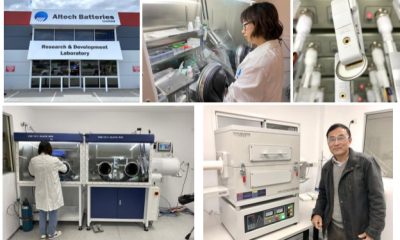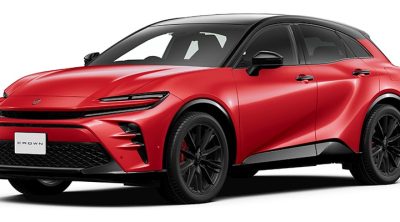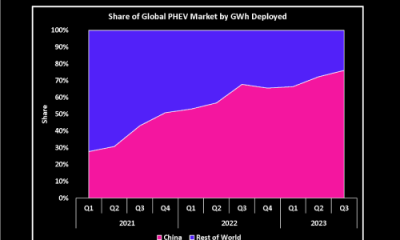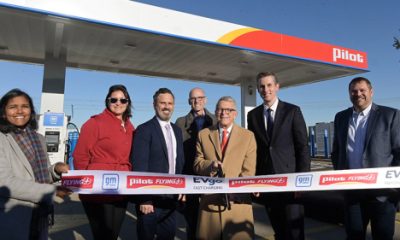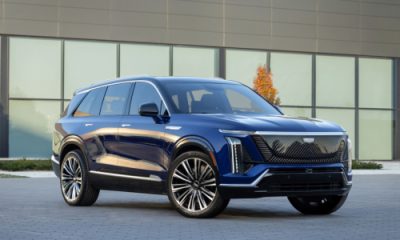Energy & Critical Metals
Hyundai Motor Group shows newly developed automatic charging robot for EVs
Hyundai Motor Group has developed an automatic charging robot (ACR) for electric vehicles (EV). The ACR for EVs is a one-arm robot capable of plugging…
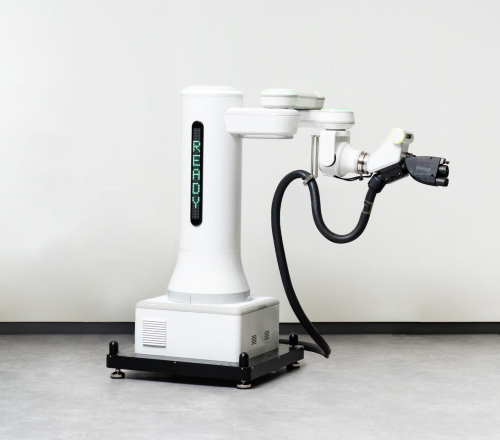
Hyundai Motor Group has developed an automatic charging robot (ACR) for electric vehicles (EV). The ACR for EVs is a one-arm robot capable of plugging a cable into an EV’s charging port and removing it again once charging is complete.
The ACR will help to make EV-charging easier and more convenient, especially in dark environments. It will also improve accessibility, particularly for people with mobility barriers, as charging cables become thicker and heavier to enable high-speed charging. We will continue developing the ACR for increased safety and more convenience, so that all EV customers can soon benefit from using it at charging stations.
—Dong Jin Hyun, Head of Robotics Lab, Hyundai Motor Group
The ACR, which may appear deceptively simple at first glance, is an example of the Group’s advanced robot technology. The Group’s Robotics Lab has considered diverse variables in developing the ACR, such as the parking location of the vehicle, the shape of the charging port, the weather, potential obstacles and weight of the charging cable.
In order for a robot to fasten a charger to the charging port securely, software technology that can simultaneously calculate these multiple variables is required. To this end, the Group has developed an algorithm that applies 3D camera-based AI technology to robots, and next-generation control technology based on this application allows robots to accurately handle heavy chargers.
Given that that most EV chargers are installed outdoors without cover, the Group’s engineers built a bespoke outdoor electric vehicle charging station at its R&D center and evaluated performance in various conditions. As a result, the ACR has secured a waterproof and dustproof grade of IP651, and its performance has been greatly improved so that it can be stably operated even in extreme environments.
In addition, engineers have installed a safety pole with a built-in laser sensor around the robot to prevent possible accidents by enabling it to detect stationary and moving obstacles.
The Group expects automatic charging robots to increase convenience of EV charging significantly, and if combined with autonomous parking control systems in future, can improve utilization by sequentially charging several parked vehicles.
The newly unveiled ACR will be on display at Hyundai Motor’s exhibition booth during the 2023 Seoul Mobility Show, held at KINTEX in Ilsan-gu, Goyang-si, Gyeonggi-do, from 31 March to 9 April.

Uranium Exploration Company Announces Additional Staking in the Athabasca Basin
Source: Streetwise Reports 12/22/2023
Skyharbour Resources Ltd. announced an update from its Canada-based Falcon Project along with additional…
Tesla Launches New Mega Factory Project In Shanghai, Designed To Manufacture 10,000 Megapacks Per Year
Tesla Launches New Mega Factory Project In Shanghai, Designed To Manufacture 10,000 Megapacks Per Year
Tesla has launched a new mega factory…
Giving thanks and taking stock after “a remarkable year”
An end-of-year thank you to our readers, industry colleagues and advertisers before Electric Autonomy breaks from publishing until Jan. 2
The post Giving…


